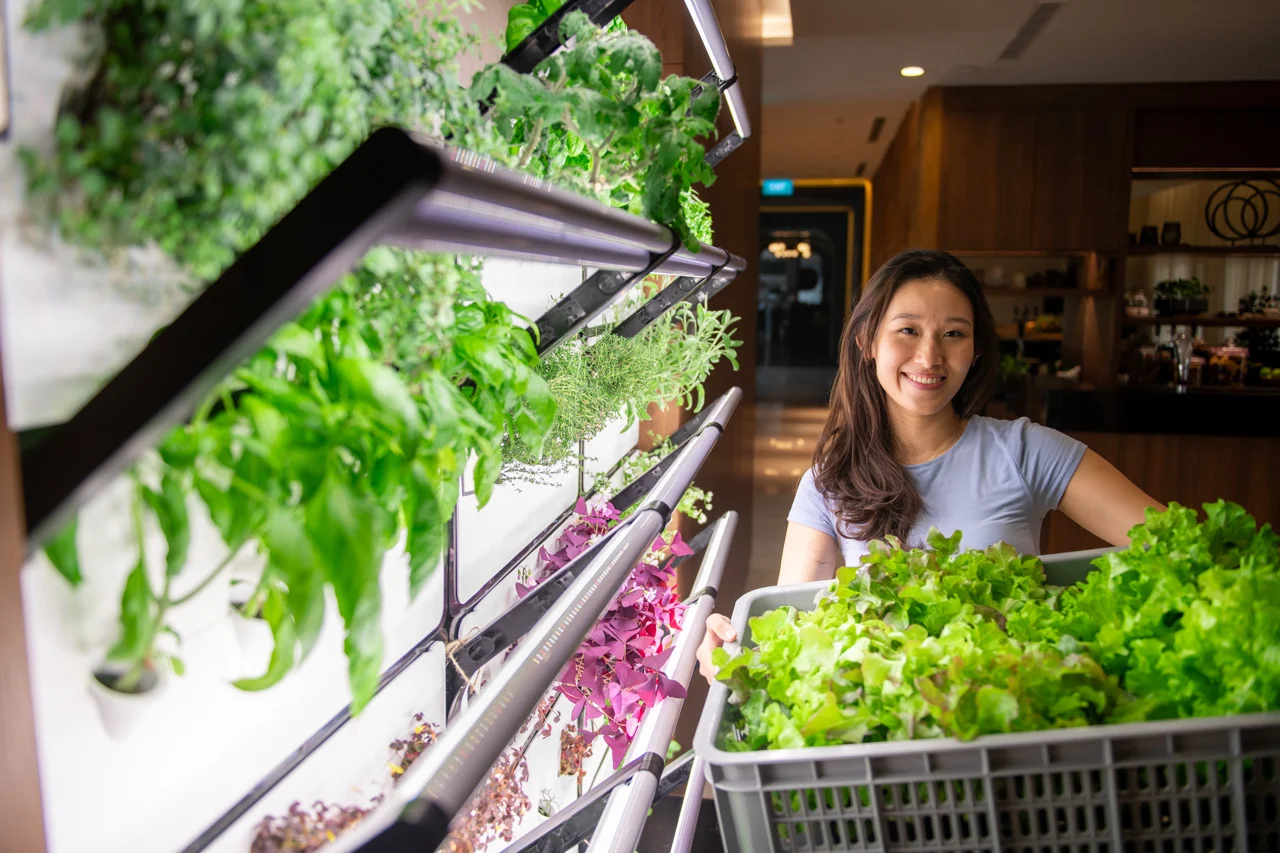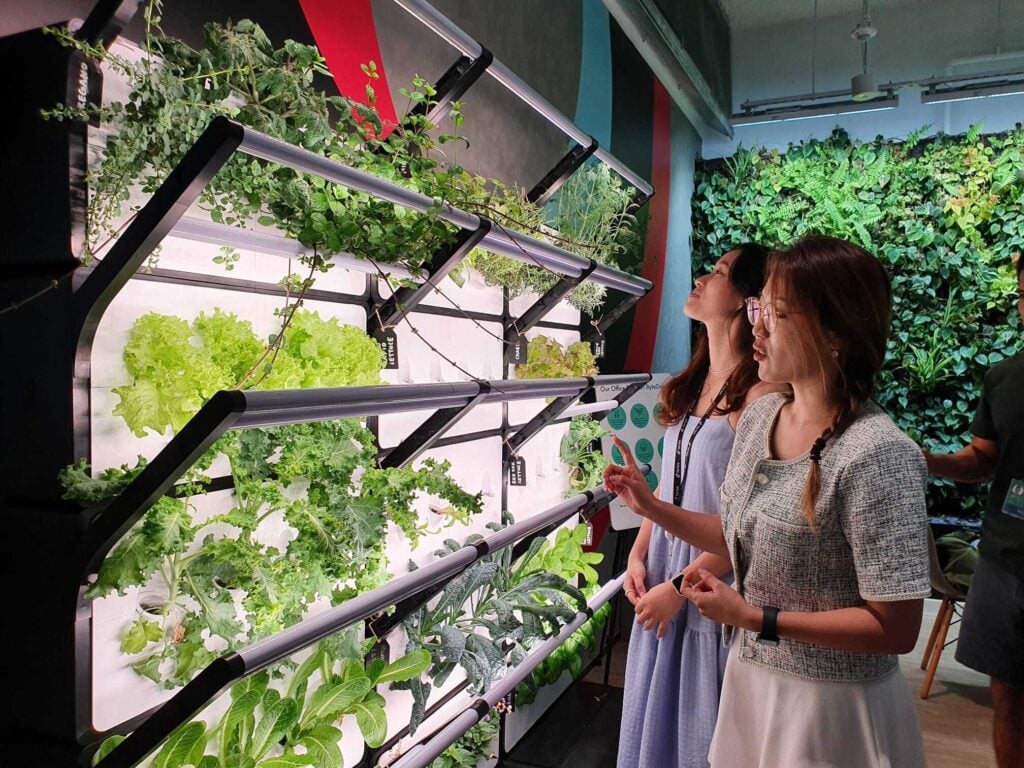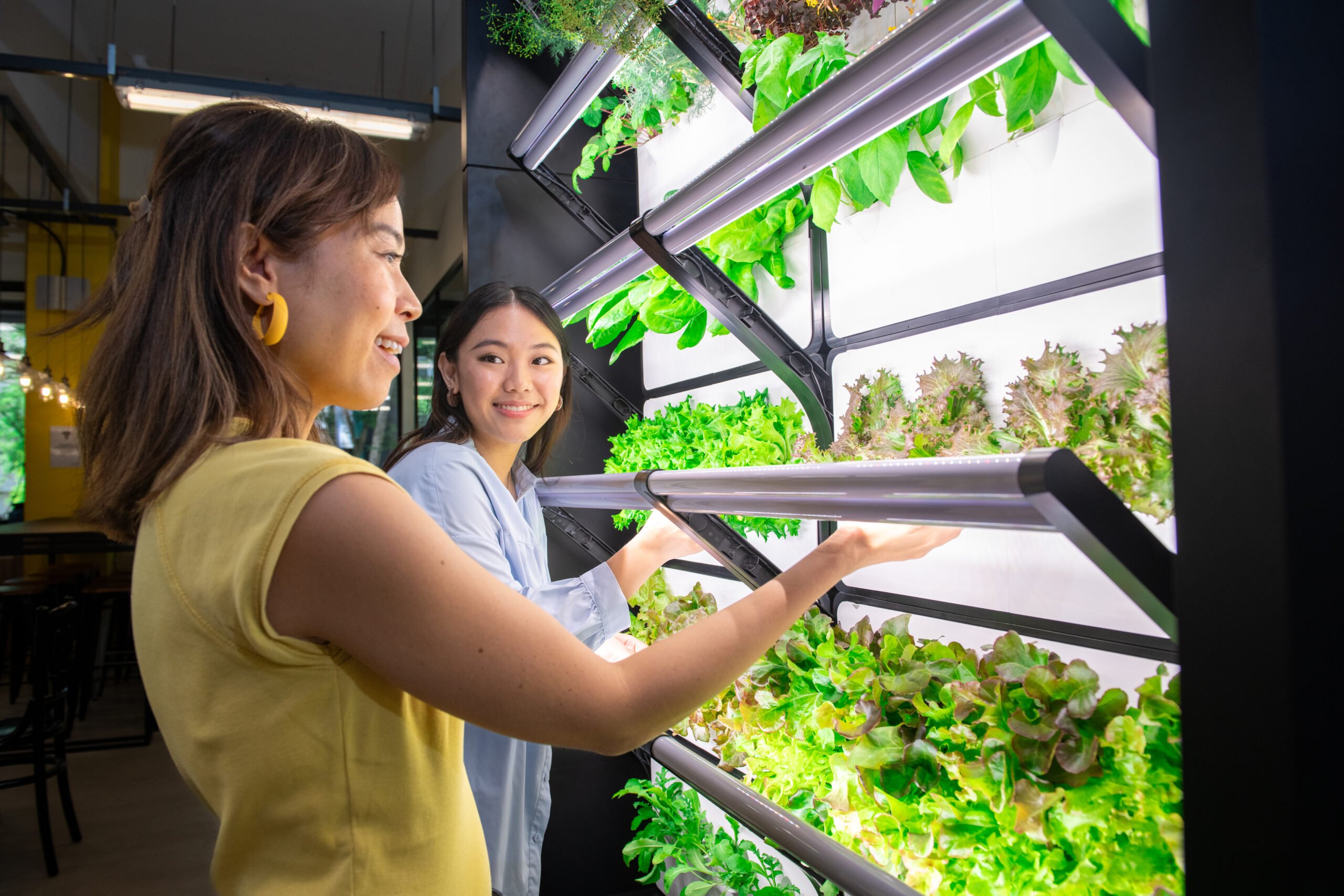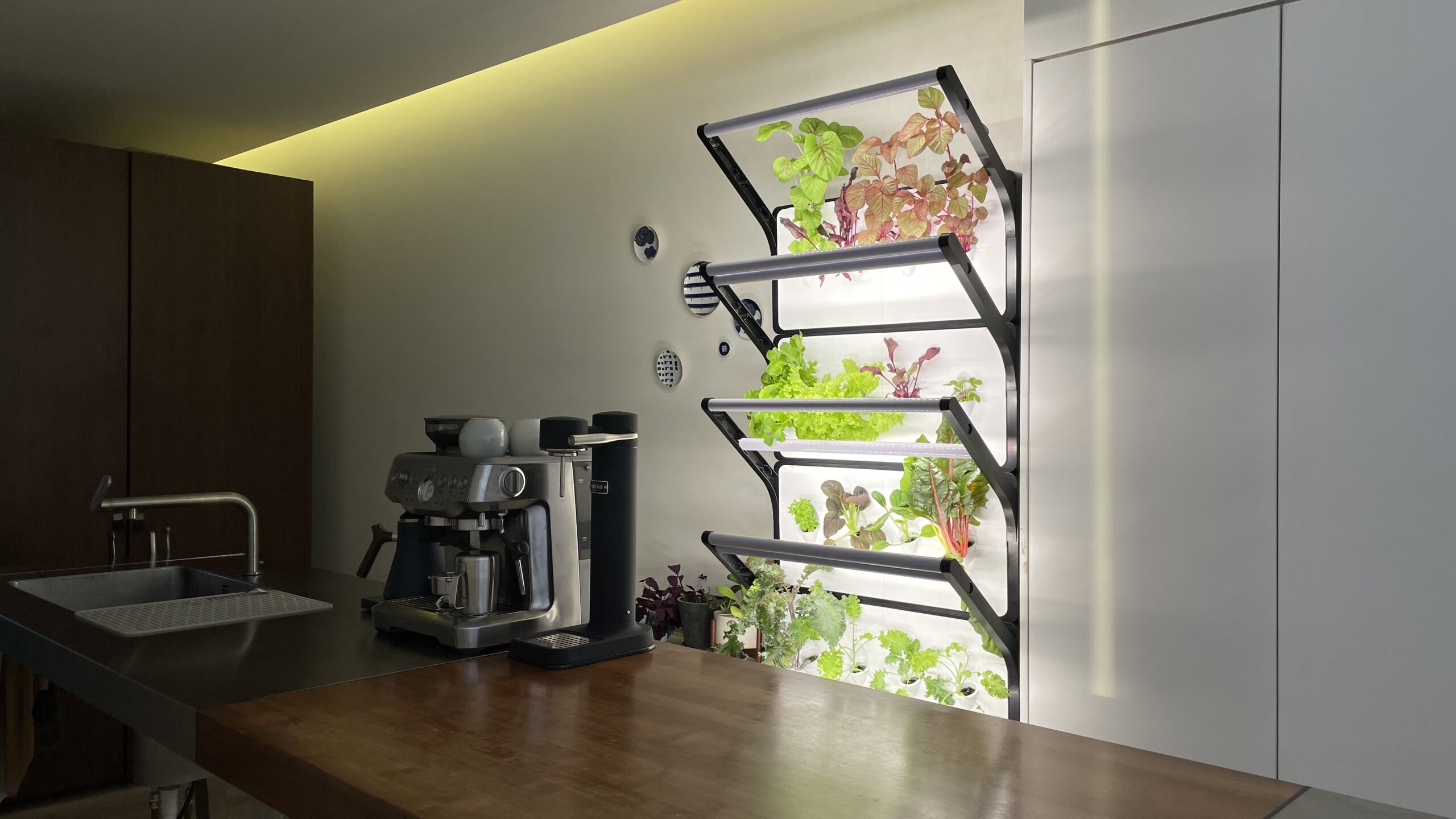- back to resources
- Urban Farming. The Benefits. The Challenges. The Future.
- back to resources
- ABOUT URBAN FARMING, GROBRIX BLOG
- Urban Farming. The Benefits. The Challenges. The Future.
Urban Farming. The Benefits. The Challenges. The Future.
- ,
-
Grobrix

What is Urban Farming?
Urban farming, or urban agriculture, involves cultivating food within city boundaries, using spaces like rooftops, balconies, and vertical gardens to deliver farm-to-table production directly to urban consumers. Unlike vertical farming, which focuses on stacked crop systems in controlled environments, urban farming encompasses a broader range of practices that transform urban spaces into productive hubs. This approach delivers significant environmental and social benefits, reshaping city landscapes, strengthening community ties, and enhancing the quality of food on our plates.
Urban farming prioritizes proximity to consumers and innovative space utilization, leveraging compact urban spaces through indoor farming techniques like hydroponics to produce fresh, pesticide-free greens. By reducing reliance on imported food and minimizing waste, urban farming promotes healthier lifestyles in densely populated areas. From balcony gardens to large indoor farming systems, it empowers communities to control their food supply, addressing modern challenges like food security and environmental degradation.
Environmental Benefits
Urban farming can provide environmental advantages by reducing food miles. Traditional agriculture relies on transporting produce over long distances, contributing to environmental degradation through fuel consumption and packaging waste. In contrast, urban farming grows food within city limits, eliminating extensive transportation and promoting cleaner air and a healthier planet. This localized approach aligns with city sustainability goals, minimizing the environmental impact of food production.
Another key benefit is reducing food waste. In traditional systems, much produce is lost during transportation and processing due to spoilage. Urban farms, situated close to consumers, ensure more harvested food reaches plates, cutting waste significantly. By producing food on-site, urban farming can also minimise the need for single-use plastic packaging, further reducing landfill contributions and supporting sustainability through efficient farm-to-table practices.
Urban farming also conserves water and reduces dependency on synthetic fertilizers and pesticides through techniques like hydroponics, commonly used in indoor farming. Hydroponics grows plants in nutrient-rich water, using less water than soil-based methods and eliminating the need for harmful chemicals. This protects soil and water bodies from contamination, supporting sustainability by preserving natural ecosystems and making urban farming a great tool for environmentally responsible food production.
The End Product
At the end of the day, urban farming enhances the quality and diversity of food available to urban consumers. Produce grown in closer to where it is going to be consumed will be harvested at peak ripeness, ensuring superior flavor and nutrition compared to supermarket options, which are often picked early for transport. The farm-to-table model minimizes harvest-to-consumption time, preserving nutrients and taste, delivering fresher, tastier, and more nutritious food that improves diets and health.
Beyond quality, urban farming promotes crop diversity. Traditional agriculture prioritizes monoculture for efficiency and transport durability, limiting crop variety. In contrast, urban farms cultivate diverse fruits, vegetables, and herbs, including heirloom and exotic varieties tailored to local preferences. This diversity enriches culinary experiences and encourages balanced, nutritious diets, enhancing food security. Localised food systems allow urban communities to enjoy fresh, locally adapted produce that reflects their cultural and dietary needs.
The aesthetic appeal of urban farming can also enhances urban spaces. Edible gardens add vibrant greenery to offices, schools, and public areas, creating inviting environments that inspire healthy eating and environmental awareness. This integration of functionality and beauty makes urban farming an attractive addition to modern cities, promoting health and well-being.
Supporting the Social Fabric of Communities

“Food has a way of bringing people together. We all need to eat. We regularly eat meals together. We sometimes prepare them together. There was a time when we used to grow food together. Unfortunately for most of us, that time has now passed and we think that’s a shame” Mathew Howe, Founder of Grobrix
Grobrix’s indoor farming solutions exist to reconnect urban communities to the source of their food throughtheir vertical gardens that enable communities to grow fresh produce, promoting social cohesion and a sense of belonging.
Education is a cornerstone of urban farming’s social impact, and Grobrix enhances this through its mission to empower communities. As Mathew explains, “At Grobrix, we believe urban farming should be enjoyed by all as a lifestyle endeavour to nourish the body, the mind and the soul.” Their farm-to-table workshops teach healthy eating and cultivation skills, equipping individuals to grow their own food. Mathew emphasizes, “Our mission is to encourage, enthuse, empower and educate urban communities to grow some of their own food and live more sustainable, self-sufficient, happier and healthier lives.”
Urban farming also supports mental health. Tending to vertical gardens or harvesting produce offers a therapeutic escape from urban life, reducing stress. By integrating urban farming, communities gain opportunities for relaxation and fulfillment. Biophilic design is often incorporated into built environments to enhance well-being. Studies show that biophilic spaces can improve mood and cognitive function, creating a sense of tranquility.
Addressing Challenges and Future Prospects
Urban farming faces challenges, including limited space in densely populated cities, where suitable land is scarce and expensive. Regulatory hurdles, such as zoning laws and permits, can complicate access to cultivation sites. Additionally, techniques like hydroponics and vertical farming require specialized knowledge, which may not be readily available to all aspiring urban farmers. These barriers can limit urban farming’s adoption.
To overcome these, public and private investment is essential. Funding for research can drive innovations in indoor farming technologies, making them more accessible and cost-effective. Training programs can equip urban farmers with expertise, while supportive policies can streamline regulations and encourage urban farming. These efforts create enabling environments for growth and resilience.
The future of urban farming is promising, driven by demand for local food systems. Innovations like vertical farming and smart agriculture will enhance efficiency, enabling urban farms to produce more with fewer resources. Singapore’s 30 by 30 initiative, aiming to produce 30% of nutritional needs locally by 2030, underscores urban farming’s role in food security. Consumer demand for local, organic, and farm-to-table produce further drives interest in urban farms as alternatives to imported goods.
To Conclude
Urban farming transforms food production, delivering environmental, social, and health benefits. By reducing food miles, minimizing waste, and providing fresher, more diverse farm-to-table produce, it enhances diets and well-being. Edible gardens strengthen communities, promote education, and support mental health, creating vibrant urban ecosystems. While challenges like space, regulations, and skills persist, investment and innovation can overcome them. Urban farming is poised to shape a resilient future for cities worldwide.
recent articles
At our partner office in Boston with Green City Growers, a few of us stepped outside to have lunch
- ,
An update from the farms…here’s what’s been growing in September at Grobrix! We welcome Teresa Pena as our in-house
- ,
My Story We all need to eat. Often, we eat meals together. Sometimes we prepare them together. In a
- ,



